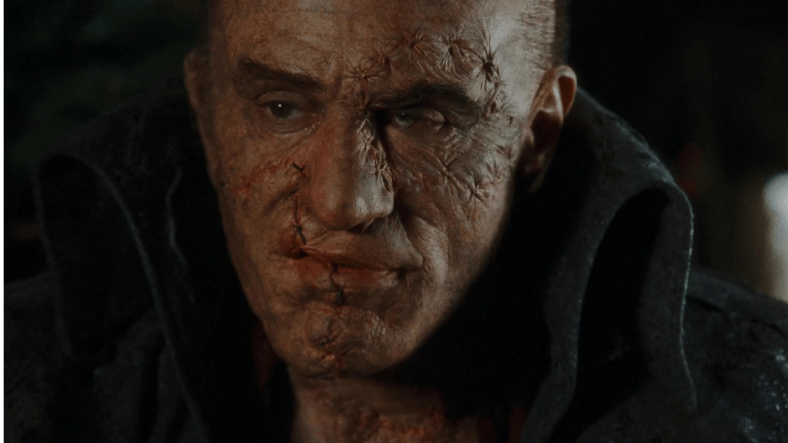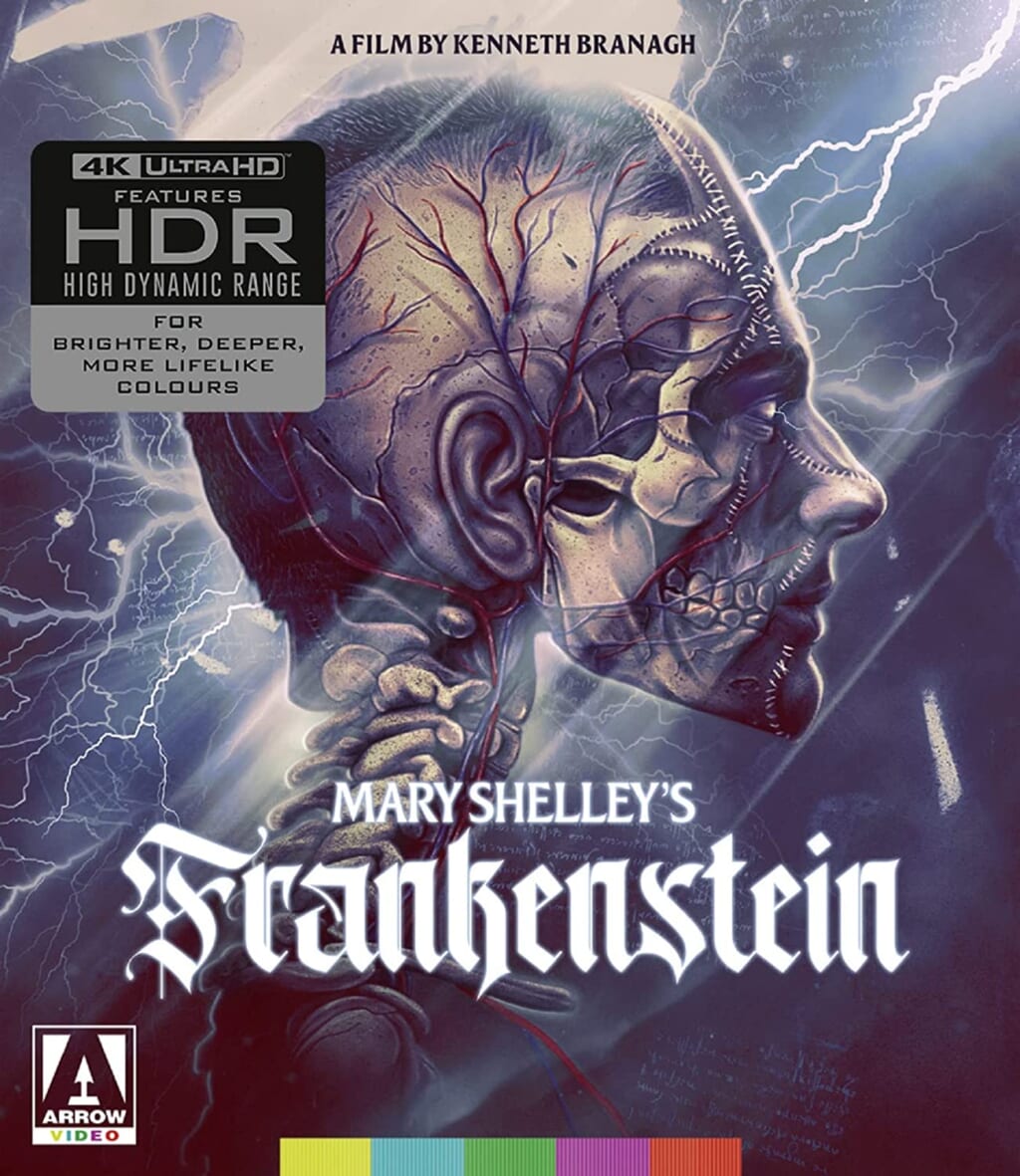‘Mary Shelley’s Frankenstein’ Is Given New Life in 4K


There was a point in the mid-‘90s when the biggest names in the Universal Classic Monster roster were getting their own remakes from the biggest names in Hollywood. Jack Nicholson took on Wolf (1994). Francis Ford Coppola directed Bram Stoker’s Dracula (1992) with Gary Oldman. Kenneth Branagh went back to the source novel for Mary Shelley’s Frankenstein (1994).
Sorry, Creature from the Black Lagoon, your attempts all have failed (and what I would give to have seen John Carpenter’s version). An interesting bit of trivia: Coppola intended to direct this film as a sort of companion piece to his Dracula but when those plans were abandoned Branagh took creative control.
After so many loose adaptations over the years the decision to hew closer to Shelley’s novel was, well, novel. But interviews with co-writer Frank Darabont have suggested Branagh chose to favor something big and bombastic and “Hollywood” over the more subtle script Darabont provided. While that may just be his opinion, the results do speak for themselves. Branagh’s film is brash and full of hubris, not unlike the obsessed doctor who he himself portrays. Just as with past pictures, the real draw is, of course, the creature, here played with sincerity by a transformed Robert De Niro.
Captain Walton (Aidan Quinn) leads a doomed mission to the North Pole; his men are exhausted and grow mutinous, and their ship is ice-locked somewhere in the Arctic Sea. Suddenly, Walton hears a cry followed by the unexpected sight of a man making his way to their vessel. The man arrives and identifies himself as Victor Frankenstein (Kenneth Branagh). Exhausted, he collapses and begins to tell his life story.
His childhood was spent in Geneva with his adopted sister, Elizabeth (Helena Bonham Carter), who would go on to become the love of his life. Losing his mother at a young age, with his doctor father (Ian Holm) unable to save her, Victor eventually attends medical school. There, he receives an unorthodox off-campus education from Professor Waldman (a nearly unrecognizable John Cleese), who shares his radical ideas on death and the creation of life, inspiring Victor to push the laws of science.
Where the story goes from there should be no mystery to any well-versed horror fan. But suffice it to say Victor grows a god complex and soon finds himself “father” to an abomination of his own creation, here played by Robert De Niro. Apparently, Branagh forbade the term “monster” from the set and since Frankenstein never names his creation he’s credited as “The Sharp-Featured Man”.
De Niro absolutely makes the picture. Birthed to a man who immediately rejects him and shunned by society Frankenstein’s creation absconds to the woods where he spends months living hidden among a family, observing their ways and learning to read & write. De Niro brings true humanity to the creation, portraying him as a being of thought and reason but marred by so much pain. He doesn’t understand his purpose, doesn’t know his place in this world. There are moments here when The Creation is emotionally hurt and De Niro perfectly conveys both inner sadness and outer rage in equal and effective measures.
Branagh’s Frankenstein is a driven man, obsessed with the notion of beating death. But that’s about it – he just wants to defeat it; to play god. Once he’s achieved his dream he is instantly horrified, hoping his creation will die, his work and journals to be destroyed. Branagh is able to convey Frankenstein’s unquenchable thirst for science beyond the realm of current reality but he’s missing that twinge of madness needed for the role. I’d also suspect some of his character’s exhaustion seen on screen was life creeping into his art, since tackling the role of director on a big-budget feature is taxing.
The third act feels overstuffed, specifically due to the introduction of a “new” character. I understand the idea was to make complete the notion of Victor’s creation being rejected on all fronts but it feels too indulgent. Interesting note: nowhere in Shelley’s novel does it mention electricity being used to give Victor’s creation life; that can be mostly attributed to James Whale’s 1931 classic, Frankenstein. So then, the way Victor utilizes electricity here seems pretty ridiculous though it is a unique approach given the times. Branagh made a bold film that takes some daring risks and it’s an even split as to what hits the mark and what misses. Still, I enjoy seeing the ambition and effort unfold on screen and find this is a version worth watching.
Arrow (or rather, Sony) has gone back to the original camera negative for this 4K scan and the results are good but not quite stunning. The 1.85:1 2160p Dolby Vision/HDR10 picture offers improved details and richer colors than the ages-old Sony Blu-ray. This is a bleak picture that frequently uses a cool palette. Lots of smoky environments. The definition is strong but never razor-sharp, with a slight softness always evident. I wouldn’t call this an attractive feature by any means but the work done by Sony has revitalized the picture in a way that hasn’t been seen since theaters. Perhaps the biggest issue is grain can often appear chunky and, occasionally, ugly.
There are two audio options included: English DTS-HD MA in 2.0 stereo and a multi-channel 5.1 surround sound mix. Dialogue seems a little low and the track is overall not what I would call “active” but there is a saving grace in composer Patrick Doyle’s work, especially the film’s main theme which is large and imposing. I don’t think the inclusion of an Atmos track would have done a whole lot to flesh out the sound field; this is largely driven by dialogue but the reproduction here sounds faithful to the source. Subtitles are available in English SDH.
An audio commentary is included with film historians Michael Brooke and Johnny Mains. Too bad Branagh didn’t participate because his thoughts are what I’d like to hear.
“Mary Shelley and the Creation of a Monster” (HD, 29 minutes and 37 seconds) features several authors discussing the original novel and the many adaptations it’s spurred.
“Dissecting Mary Shelley’s Frankenstein” (HD, 15 minutes and 33 seconds) takes a look at the differences between the novel and the film.
Frankenstein (1910) is a 13-minute adaptation produced for Edison Studios that is impressive in its storytelling with such scant time and some freaky, visceral effects. The scene where The Creation comes to life is grotesque. Definitely my favorite extra on this release.
There are interviews with costume designer James Acheson, composer Patrick Doyle, and makeup artist David Parker. A couple of trailers and an image gallery are also included.
Special Features:
- NEW 4K RESTORATION OF THE FILM FROM THE ORIGINAL CAMERA NEGATIVE by Sony Pictures Entertainment
- DOLBY VISION/HDR PRESENTATION OF THE FILM
- Original uncompressed stereo audio and DTS-HD MA 5.1 surround audio
- Optional English subtitles for the deaf and hard of hearing
- Brand new audio commentary by film historians Michael Brooke and Johnny Mains
- Brand new interview with composer Patrick Doyle
- Brand new interview with costumer designer James Acheson
- Brand new interview with make-up designer Daniel Parker
- Mary Shelley and The Creation of a Monster, a brand new documentary featurette on the origins and evolution of the Frankenstein story, featuring Gothic specialists David Pirie, Jonathan Rigby and Stephen Volk
- Dissecting Mary Shelley’s Frankenstein, a brand new featurette with David Pirie, Jonathan Rigby and Stephen Volk on the differences between the novel and Kenneth Branagh’s screen adaptation
- Frankenstein: A Liberal Adaptation from Mrs. Shelley’s Famous Story for Edison Production (1910): The first screen adaptation of Shelley’s story in a 2K restoration by the Library of Congress, with music by Donald Sosin
- Original trailers
- Reversible sleeve featuring original and newly commissioned artwork by Laz Marquez
- First pressing only: Illustrated collector’s booklet featuring new writing by Jon Towlson and Amy C. Chambers
-
Mary Shelley's Frankenstein
-
Special Features
Summary
While I will admit both the film and its cinematography have their problems there is no doubt Arrow’s release brings both to fans in the highest quality possible. This is a tremendous leap over any previous release. The inclusion of an early adaptation for Thomas Edison’s studio alone makes the bonus features worth watching.

